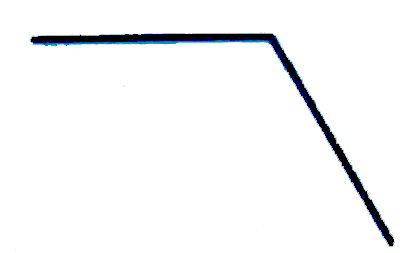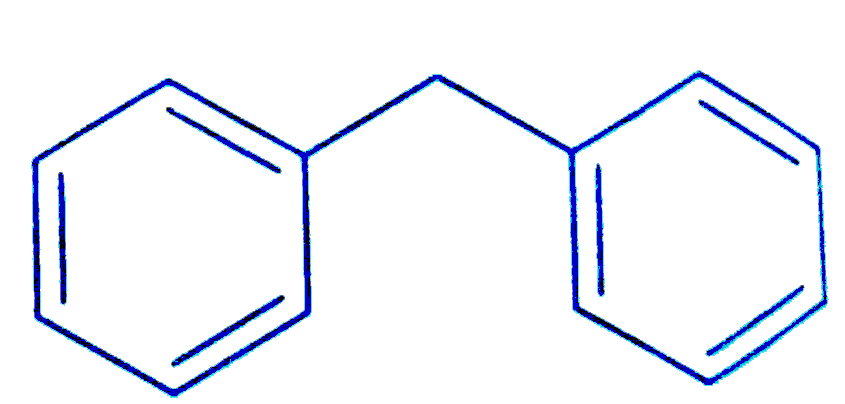In halogenation process rate of reaction of alkanes with halogens is
The correct Answer is:C
To determine the rate of reaction of alkanes with halogens during the halogenation process, we need to analyze the bond strengths of the halogen molecules involved. Here's a step-by-step breakdown of the solution:
1. Understanding Halogenation:
- Halogenation is a reaction where alkanes react with halogens (like Cl2, Br2, I2) to form alkyl halides. This reaction typically proceeds via a free radical mechanism.
2. Identifying Halogens:
- The common halogens involved in halogenation are fluorine (F2), chlorine (Cl2), bromine (Br2), and iodine (I2).
3. Bond Strength and Bond Length:
- The rate of reaction is influenced by the bond strength of the halogen molecules. Generally, the weaker the bond, the easier it is to break, leading to a faster reaction.
- Bond strength is inversely related to bond length: longer bonds are typically weaker.
4. Analyzing Bond Strengths:
- Iodine (I2): Has the weakest bond due to its large atomic size and long bond length, making it the most reactive in halogenation.
- Bromine (Br2): Has a stronger bond than iodine but weaker than chlorine and fluorine.
- Chlorine (Cl2): Has a stronger bond than bromine but weaker than fluorine.
- Fluorine (F2): Although fluorine has a strong bond, the presence of lone pairs causes repulsion, making it less reactive than expected.
5. Order of Reactivity:
- Based on bond strengths, the order of reactivity in the halogenation of alkanes is:
- Iodine (I2) > Bromine (Br2) > Chlorine (Cl2) > Fluorine (F2)
- This means that iodine reacts the fastest, followed by bromine, then chlorine, and finally fluorine.
6. Conclusion:
- Therefore, the rate of reaction of alkanes with halogens in the halogenation process is highest with iodine and lowest with fluorine.
Final Answer:
The order of reactivity of alkanes with halogens in the halogenation process is: Iodine > Bromine > Chlorine > Fluorine.
---
- Halogenation is a reaction where alkanes react with halogens (like Cl2, Br2, I2) to form alkyl halides. This reaction typically proceeds via a free radical mechanism.
- The common halogens involved in halogenation are fluorine (F2), chlorine (Cl2), bromine (Br2), and iodine (I2).
- The rate of reaction is influenced by the bond strength of the halogen molecules. Generally, the weaker the bond, the easier it is to break, leading to a faster reaction.
- Bond strength is inversely related to bond length: longer bonds are typically weaker.
- Iodine (I2): Has the weakest bond due to its large atomic size and long bond length, making it the most reactive in halogenation.
- Bromine (Br2): Has a stronger bond than iodine but weaker than chlorine and fluorine.
- Chlorine (Cl2): Has a stronger bond than bromine but weaker than fluorine.
- Fluorine (F2): Although fluorine has a strong bond, the presence of lone pairs causes repulsion, making it less reactive than expected.
- Based on bond strengths, the order of reactivity in the halogenation of alkanes is:
- Iodine (I2) > Bromine (Br2) > Chlorine (Cl2) > Fluorine (F2)
- This means that iodine reacts the fastest, followed by bromine, then chlorine, and finally fluorine.
- Therefore, the rate of reaction of alkanes with halogens in the halogenation process is highest with iodine and lowest with fluorine.
The order of reactivity of alkanes with halogens in the halogenation process is: Iodine > Bromine > Chlorine > Fluorine.
Similar Questions
Knowledge Check
- Question 1 - Select One
Halogenation of alkanes is
AA reductive processBAn oxidative processCAn isothermal processDAn endothermal process - Question 2 - Select One
Halogenation of alkanes is
AA reductive processBAn oxidative processCAn isoathermal processDAn edothermic process - Question 3 - Select One or More
Which of the following molecules of alkane will give only monohalogenated product on reaction with halogen in presence of sunlight?
ACH3CH3B C(CH3)4CD
C(CH3)4CD
Halogenation of alkanes is an example of
View SolutionHalogenation of alkanes is an example of
View SolutionHalogenation of alkanes is an example of
View SolutionDuring photochemical halogenation of alkanes the halogen molecules first gives
View SolutionReactions of alkanes with halogens is explosive in case of
View Solution

